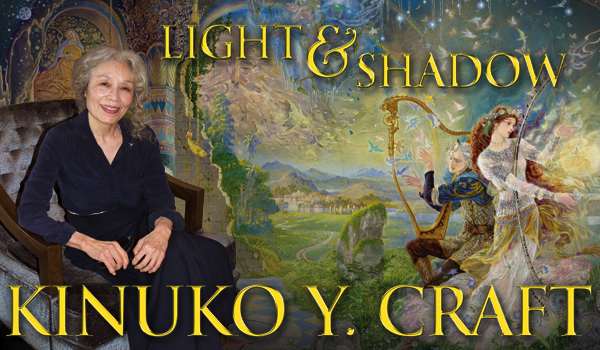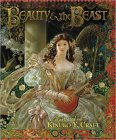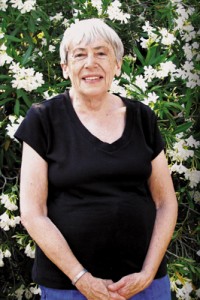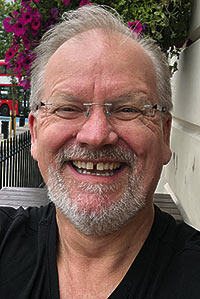Kinuko Y. Craft: Light & Shadow

Kinuko Yamabe Craft was born January 3, 1940 in Kanazawa, Japan, and began painting and drawing at an early age. She received her BFA from the Kanazawa Municipal College of Fine and Industrial Art in 1962, and decided to continue her studies in the US. She studied for a year and a half at the School of the Art Institute of Chicago (1964-65), and then took the first of two jobs with Chicago-area commercial art studios. In 1970 she hired an agent and began working as a freelance commercial artist, producing work for publications including The Atlantic Monthly, The New York Times, Newsweek, Playboy Magazine, Time, Forbes, Sports Illustrated, and National Geographic. She also worked on packaging as well as book cover art and advertising art for book publishers and ad agencies.
Craft’s paintings have adorned the covers of work by countless authors, including Isabel Allende, Isaac Asimov, Orson Scott Card, Stephen King, C.S. Lewis, Patricia A. McKillip, Tanith Lee, Andre Norton, Isabel Glass, Juliet Marillier, and many more. For the past two decades she has focused more on illustrating picture books and working on more personal projects, including books retold by Marianna Mayer, among them The Twelve Dancing Princesses (1989) and Baba Yaga and Vasilisa the Brave (1999), and two books authored by her daughter, M. Charlotte Craft: Cupid and Psyche (1996) and King Midas and the Golden Touch (1999). She has also done fairytale books: Cinderella (2000), Sleeping Beauty (2002), and Beauty & the Beast (2016), the latter two with husband Mahlon Craft (married 1965). Her work has been licensed on posters, journals, greeting cards, calendars, and other merchandise. Some of her art was collected in Drawings and Paintings (2007), and her first adult coloring book is Myth & Magic: An Enchanted Fantasy Coloring Book (2016).
Craft is the recipient of many awards of excellence. She has been honored by The Society of Illustrators in New York with a one-woman show, three Gold Medals, two Silver Medals and their Hamilton King Award (1987). She won the ASFA Spectrum 9 Grand Master Award in 2002, and has multiple Gold awards from the Spectrum anthologies. She won Chesley Awards in 2000 and 2001, and ‘‘Best in Show’’ from the Renaissance 2001 show at the Franklin Mint in Pennsylvania.
Her paintings appear in several permanent collections, including the National Geographic Society in Washington DC and The Museum of American Illustration in New York City.
Excerpts from the interview:
‘‘One of the benefits I get from doing covers is, I get to read. The main thing I like about what I do is that I’m away from reality and the real world where I live, in a make believe one – a land of someone else’s imagination – as long as the project lasts. I need that to survive.
 ‘‘I read manuscripts at night before I go to bed. I take them into the bathtub with me to read at the end of the day, marking out places in the story to see if I can find something that sparks an idea. At the end I have several marked pages pulled out that have given me images for the cover. Sometimes, I do hundreds of sketches until I can see the image and its basic composition in my mind. Often it doesn’t work as well as I imagined. It might be imperfect, but I should feel that it will be perfect and my best work ever in my mind. The process is very much like a jigsaw puzzle. I start to sketch out the idea, often only to find it’s not working out. Then I have to look at the whole story again, but from a different angle to reconstruct it into something that works.”
‘‘I read manuscripts at night before I go to bed. I take them into the bathtub with me to read at the end of the day, marking out places in the story to see if I can find something that sparks an idea. At the end I have several marked pages pulled out that have given me images for the cover. Sometimes, I do hundreds of sketches until I can see the image and its basic composition in my mind. Often it doesn’t work as well as I imagined. It might be imperfect, but I should feel that it will be perfect and my best work ever in my mind. The process is very much like a jigsaw puzzle. I start to sketch out the idea, often only to find it’s not working out. Then I have to look at the whole story again, but from a different angle to reconstruct it into something that works.”
…
‘‘When I’m ready to do the final drawing, lots of times I hire models. My favorite model is a dancer. No matter what she does, it’s always a graceful, classical pose. I ask her to pose like my rough sketch. Sometimes she does a better pose than my drawing. I take lots of digital photos. If I can do the human body well, and understand it well, I can also understand a table, doors, windows, a cloud – all those things. For me, draftsmanship is very important.
‘‘Every painting I’ve produced falls short of my expectations. They are my children, but they’re all juvenile delinquents. I’m not proud of them. There’s an expectation in my head when I look at the empty space, and then I start to do the drawing. That’s fine. In the drawing stage, I still have the perfect image in my mind. At around 75 percent completion, I start to notice the perfect painting I had in my mind turns to disappointment. I just have to quit, and move on to the next one. There’s a certain voice telling me, move on, the next one will be better.”
…
‘‘My studio is a mess. The bottoms of some piles haven’t seen the light of day since the early ’80s, but I like it this way. It’s full of reference material, piles of books and magazines that haven’t moved in decades, cast off sketches and half-finished preliminary drawings for work I want to do. There’s only space for me and my German Shephard Wolfgang. Only a small number of people are allowed in there.
‘‘There are lots of projects I intend to do: images from Ovid’s Metamorphoses, a series of ghost stories, images from mythologies. I think I must hurry up before my time runs out. If I had a time machine, I would like to go back 20,000 years to see what the inhabitants of the Grotto of Lascaux looked like and what the landscape looked like then. I would like to see what Helen of Troy, the most beautiful woman in the world, looked like and what truly happened in the Trojan War. Was that just a gifted blind poet’s imagination?”
…
‘‘Many years ago I used unprepared Strathmore illustration board because it takes watercolors, which I use for laying in broad areas of color. Occasionally I had problems with it depending on the painting medium I was using so I switched to Ampersand gesso board. It is very smooth and takes my watercolor underpainting easily. I do a rough sketch on tracing paper, a title sketch, and then transfer everything to gesso board, and do the final drawing there. Then I apply an under painting, mainly in Windsor Newton watercolors. The board is sealed and then I finish the painting in oil color. I have always used Windsor Newton Series 7 watercolor sable brushes. It used to be that one brush would last me three paintings. My work is usually not that huge, maybe 16″ by 20″ or 18″ by 24″, and I could complete three paintings before the brush wore out. But these days, they don’t seem to last as long. Mahlon got in touch with the Windsor Newton people in England, and asked, ‘Why is this brush not lasting as long?’ They said they use the same number of sable hairs they always did, but the sable hair itself is thinner and more brittle now because of global warming. Now I need three brushes to complete one painting.”
Read the complete interview in the April 2017 issue of Locus Magazine. Interview design and photo by Francesca Myman.




